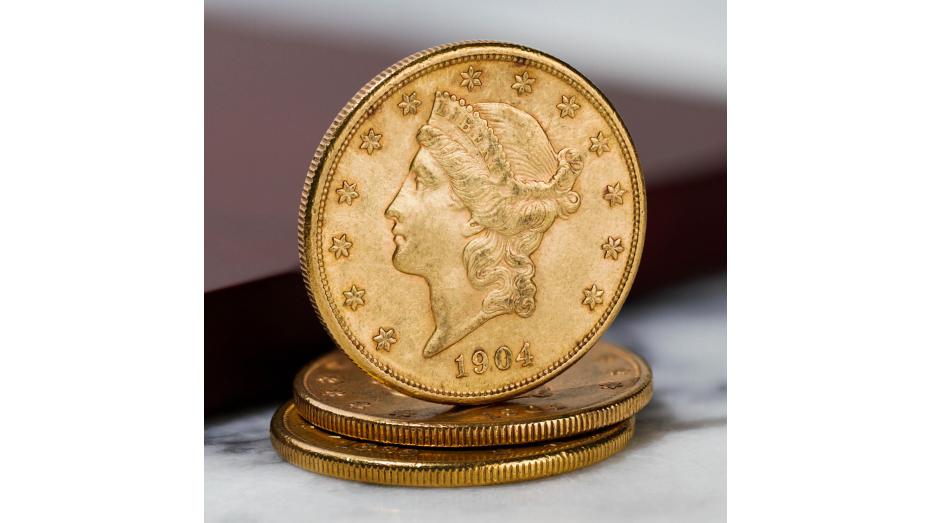The Discovery of an Artist: Celebrating James B. Longacre's Birthday
This week, Rare Collectibles TV commemorates the birth of James B. Longacre, fourth Chief Engraver of the United States Mint and creator of some of the most famous coin designs of the nineteenth century. Having crafted coins such as the Liberty Head Gold Double Eagle, Indian Head Cent, and Shield nickel, Longacre’s legacy is one still respected and celebrated by numismatists today.
Born in Delaware County, Pennsylvania on August 11, 1794, Longacre ran away to Philadelphia at just twelve years of age. Desperate to find work in this bustling new city, Longacre took an apprenticeship working at a bookstore with John E. Watson. Watson kindly took Longacre into his family and raised him. Watson soon realized that Longacre’s true talent was in portraiture and art, releasing him from his apprenticeship in 1813.
Shortly after, Longacre apprenticed under George Murray at the banknote engraving firm Murray, Draper, Fairman and Company. Coincidentally the third Chief Engraver, Christian Gobrecht, who Longacre would succeed, also worked at the firm. During his years of apprenticeship with Murray, Longacre refined his skills as a portrait engraver, creating depictions of Founding Fathers such as George Washington, Thomas Jefferson, and John Hancock.
Having established his skills, Longacre soon set up his own business in 1819. During this time he continued to build his reputation as one of the most impressive engravers in the field, creating depictions of President James Madison and President Andrew Jackson. The most notable portrait created by Longacre was that of Senator John C. Calhoun, who would soon greatly change Longacre’s life.
In 1844, after the death of Third Chief Engraver Christian Gobrecht, the United States was pressed to find a new Chief Engraver. John C. Calhoun recommended that Longacre be hired due to his proficiency in portraiture engraving. Promptly, under President John Tyler, Longacre was appointed as the fourth Chief Engraver of the U.S. Mint. In his first few years as Chief Engraver however, Longacre’s talents went unused because Gobrecht had redesigned all denominations used by the United States. This gave Longacre plenty of time to familiarize himself with the intricacies of designing coins.
Longacre’s time to shine came in 1849, as the California Gold Rush generated a massive surge of the precious metal’s availability. Congress quickly passed legislation authorizing two new denominations: the gold dollar and the twenty-dollar gold double eagle. The responsibility to design these coins fell onto Longacre, who refined Gobrecht’s Liberty Head design for the new denominations.
Although Longacre’s gold designs were well-received, his tenure as Chief Engraver was a time of difficulty. Particularly, it was Longacre’s issues with Mint Director Robert Patterson and Chief Coiner Franklin Peale that weighed on him. Peale and Patterson were running a lucrative private business using U.S. Mint equipment and employees. The two of them knew that Longacre did not approve of this activity, and so they did what was in their power to have him fired. Their attempts proved unsuccessful and by the mid-1850s both Peale and Patterson were found out and no longer employed by the United States Mint.
With a more peaceful life at the Mint, Longacre was able to flourish and become one of the Mint’s most prolific designers ever. In addition to his Liberty Head design used on the gold dollar and double eagle, Longacre also created the Indian Princess design used on the $3 gold piece.
Outside of gold coinage, Longacre also contributed numerous designs for multiple cents and other smaller-denomination coins. In 1856, he designed the Flying Eagle cent, which was later replaced with the Indian Head, another one of Longacre’s creations. Additionally, Longacre created the rare two-cent and three-cent pieces, which were struck only for a limited period of time before being phased out. Today, the two and three-cent pieces remain difficult to find, especially in Mint State condition.
Longacre’s final noteworthy creation was the very first nickel ever struck by the US Mint, the famous Shield Nickel. After the pain and bloodshed of the American Civil War, the Shield Nickel was created as a symbol of American strength and unity.
James Longacre passed away on January 1st, 1869, at the age of 74. Since his passing, art historians and numismatists have recognized Longacre for his influence on American coinage, particularly his choices for symbols representing the country. He has also been praised for being one of the first artists to depict Native Americans in official American artwork.
If you are looking to collect coins designed by James B. Longacre such as the $20 Liberty Head Gold Double Eagle or Indian Princess Gold Dollar, Rare Collectibles TV’s extensive inventory can help you find exactly what you need.






